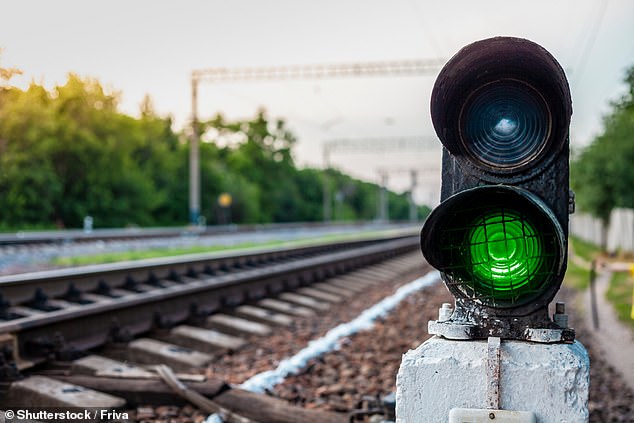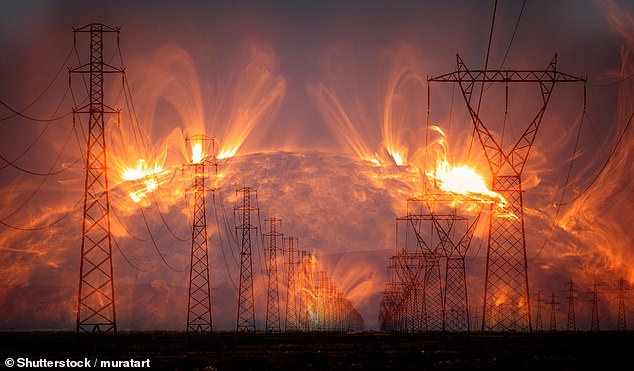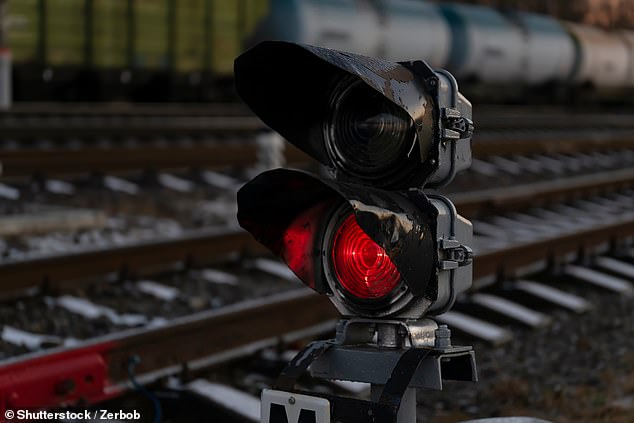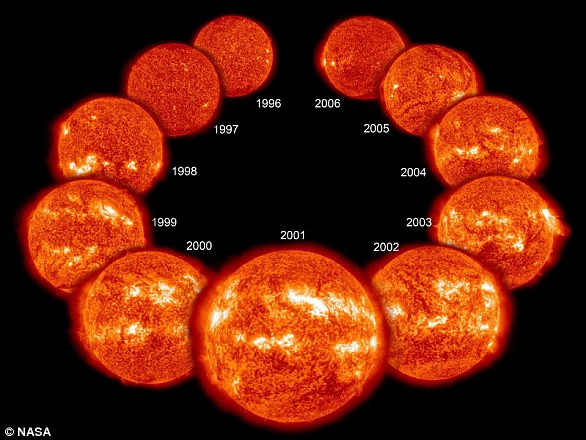How space weather could lead to travel CHAOS in Britain: Solar storms could turn train signals from red to green, study warns
Whether it's line browsing or signal failures, train passengers regularly face problems when trying to get to work.
But things could soon get much worse – thanks to space weather.
A new study has warned that train accidents could be caused by solar storms changing signaling from red to green.
“Our research shows that space weather poses a serious, albeit relatively rare, risk to the railway signaling system, which could cause delays or even have more critical safety implications,” said Cameron Patterson, a PhD researcher at Lancaster University and lead author of the study.
'This natural hazard must be taken seriously.'
Whether it's line browsing or signal failures, train passengers regularly face problems when trying to get to work. But things could soon get much worse – thanks to space weather. Pictured: Artist's impression of a solar storm

A new study has warned that train accidents could be caused by solar storms that change signaling from red to green (stock image)
The sun is constantly ejecting solar material into space – both in a steady stream known as the 'solar wind' and in shorter, more energetic bursts of solar eruptions.
When this solar material hits Earth's magnetic environment – known as the magnetosphere – it can create geomagnetic storms.
“The impacts of these magnetic storms can range from mild to extreme, but in a world increasingly dependent on technology, their effects are becoming increasingly disruptive,” NASA explains.
For example, a solar storm in 1989 caused power outages across Quebec, while the 1959 Carrington event caused fires in telegraph stations.
Worryingly, the risk of these storms increases as we approach 'solar maximum' – a peak in the sun's eleven-year activity cycle – which is expected to arrive as early as 2024.
In their new study, the researchers wanted to understand how solar flares could affect the rail industry.
The team focused on two routes: the Preston-Lancaster section of the West Coast Main Line and the Glasgow-Edinburgh line.
Worryingly, their models revealed how solar storms could cause geomagnetically induced currents (GICs), which could disrupt electricity transmission and distribution grids.
“Our research suggests that space weather is able to flip a signal in either direction, turning a red signal into green or a green signal into red,” said Patterson.

The sun is constantly ejecting solar material into space – both in a steady stream known as the 'solar wind' and in shorter, more energetic bursts of solar eruptions. When this solar material hits Earth's magnetic environment – known as the magnetosphere – it can create geomagnetic storms (artist's impression)

The researchers say space weather can cause two types of failures. Errors on the right side cause the signal to switch from green to red, while errors on the wrong side cause the signal to switch from red to green (stock image)
'This is obviously very important from a safety perspective.'
According to the researchers, space weather strong enough to have this effect occurs in Britain every few decades.
“By building a computer model of the signaling circuits using realistic specifications for the different components of the system, we found that space weather events are expected in Britain every few decades that could cause faults in these trace circuits,” added Mr. Patterson added.
The researchers say space weather can cause two types of failures.
Errors on the right side cause the signal to switch from green to red, while errors on the wrong side cause the signal to switch from red to green.
According to their model, failures on the “wrong side” could be caused by weaker geomagnetic storms than failures on the “right side.”
These weaker storms occur every one to twenty years.
Based on the findings, the team calls on the rail industry to consider the risk of space weather and take steps to mitigate it.
Professor Jim Wild, co-author of the study, said: 'Other industries such as aviation, electricity generation and transmission, and the space sector are considering the risks to their operations and exploring how these can be mitigated.
'It is important that the rail sector is included in this planning.
'As our understanding of space weather hazards improves, it is possible to think about how we can reduce the risks.
“In the future, we could see space weather forecasts being used to make decisions about curtailing rail operations if an extreme event is expected, just as meteorological forecasts are currently used.”

